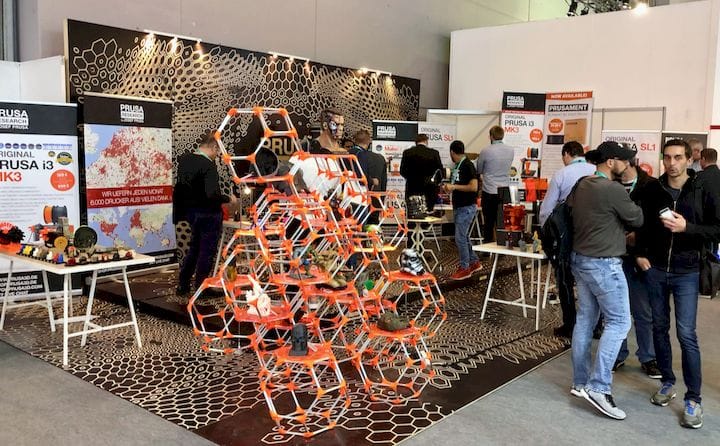![Prusa Printers’ modest exhibition stand at formnext 2018 [Source: Fabbaloo]](https://fabbaloo.com/wp-content/uploads/2020/05/image-asset_img_5eb0a204bf8ed.jpg)
After thinking more about Prusa Printers’ astonishing production figures, I’m now wondering whether consumer 3D printing is back.
When did it go away? Was it ever a thing?
It was, at least in a perceptual way. Once the initial patents for basic 3D printing processes expired after decades in 2009, a number of startups emerged, producing ultra-low cost – but very rough – desktop 3D printers. Multiple entrepreneurs took up the marketing angle of selling these devices to general consumers, a huge potential market.
Their marketing efforts enabled several companies to dramatically boost their stock prices, venture capital raised, and of course, personal bonuses.
But it was all for nought, as there were several technical, social and financial barriers that were not handled with that generation of desktop 3D printers. Once the public realized this, the bubble of interest collapsed, much in the manner that Gartner describes in their usually accurate Hype Cycle concept.
Their concept includes the notion of a huge initial boost in interest, followed by a Trough of Disillusionment, as initial hopes become anchored to lesser capabilities of reality. But at the end of the Hype Cycle sequence is the Plateau of Productivity, where surviving participants ingeniously leverage the technology into its true, final and productive uses.
I’ve been watching for this final stage, and have yet to see it truly emerge.
In 2014-2016 as interest in consumer 3D printing waned, many startup companies failed. Countless identical Kickstarter ventures launched and failed. Money was lost and the few survivors who weren’t subsided by larger organizations pivoted into other markets. Some succeeded tremendously, like Ultimaker, but many others are now forgotten.
But now we see that Prusa Printers, a company that literally manufactures the same type of desktop 3D printer that in 2010 everyone had hoped would be the “consumer 3D printer”, has absolutely massive sales levels. The same could be said of several other desktop 3D printer manufacturers, including LulzBot, Ultimaker, XYZprinting and several others, all selling at record levels, far beyond the sales of 2012-14.
That statistic does pose a question: is consumer 3D printing coming back? Does all the demand for these consumer-like devices indicate a new wave of interest? Are all those sales going to consumers?
I’m thinking – no.
The reasons for the “no” in my mind is simply that very few, if any, of the consumer barriers existing in 2014 have been breeched. Let’s take a look:
-
Desktop 3D printers are somewhat more reliable than initial machines, but are still far from the levels of reliability required for true consumer use
-
Equipment pricing has dropped in a way. The market is segmented into two: ultra-low-cost Asian machines with few features, minimal safety features and requiring a ton of technical expertise for operation; and a higher priced market of machines that are more reliable, easier to use. Consumers would prefer the latter, and their prices are still too high
-
In spite of several attempts, no one seems to have invented a truly easy way for anyone (and I mean consumers) to create their own printable 3D models. We still have free tools that don’t do very much or incredibly expensive professional tools that are very hard to learn
-
Finally, and this is the stake in the heart of consumer 3D printing, there is no “killer app”, or specific need for a consumer to do 3D printing. If a consumer had one, what could they practically do with it? No, printing spare parts is not a thing because manufacturers greedily keep all their designs secret, leaving not much other than printing more plastic dragons
If these barriers are still in force, who then, is buying all these desktop machines. Some ideas:
-
Existing operators are buying more machines. I personally have 8-10 machines, and I suspect most personal 3D printer operators have more than one machine, and upgrades are frequent
-
Machines are being acquired by educational institutions as 3D design is increasingly being incorporated into learning programs
-
The growing number of public makerspaces, some in libraries, are buying desktop 3D printing equipment
-
The increasing capabilities of desktop machines is attracting more designers and professionals who use them for prototyping in unusual materials
-
Long-term 3D printer workshops are adding the now powerfully capable desktop equipment to add to or replace their traditional industrial equipment
These parties are more than sufficient to generate huge sales of desktop equipment for the involved manufacturers.
But is consumer 3D printing back? Not yet, friends.











No one seems to offer collaborative 3D printing modes on dual extrusion devices. We explain why this is the case.